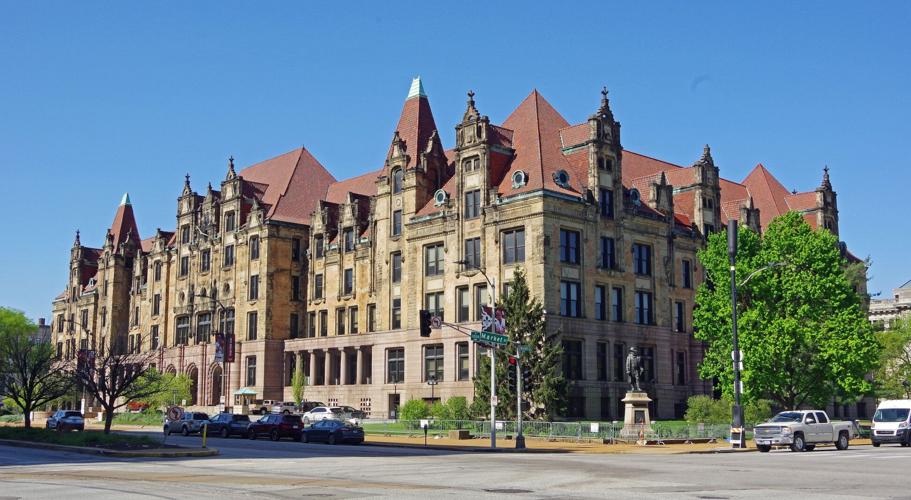
St. Louis City Hall, seen on April 13, 2024.
ST. LOUIS — An aldermanic panel has tweaked a plan to divvy up Rams relocation settlement money, shifting $14 million from downtown to affordable housing, neighborhood development and child care for city employees.
The Housing, Urban Development and Zoning Committee on Thursday OK’d various changes before voting to send the $294 million bill to the full Board of Aldermen.
Under the revised plan, efforts to boost downtown would get $60 million instead of the $74 million in a compromise proposal unveiled Tuesday by Mayor Tishaura O. Jones and other officials.
The amounts set aside for housing and neighborhoods would increase by $5 million apiece to $40 million and $20 million, respectively. The child care fund would increase by $4 million to $34 million.
People are also reading…
The reduction in money for downtown was pushed by Aldermanic President Megan Green. She said the plan unveiled Tuesday had “swung too far” toward prioritizing “big business interests” promoting downtown aid over those of the city’s many other neighborhoods, children and the city workforce.
An opponent of the downtown reduction, Alderman Michael Browning, of Forest Park Southeast, said downtown’s decline affects the city’s tax base and its ability to provide services citywide.
“When we cut money from downtown, we are cutting the legs off of the rest of the city,” he said.
The revised bill was endorsed by the panel on a 5-2 vote.
More changes conceivably could be attempted when the full board takes up the bill on Jan. 31.
Greater St. Louis Inc., the business lobby group which pushed for the dollars for downtown, issued a statement Thursday expressing concern at the amendments adopted by the committee that would cut downtown funding.
“Failing to invest Rams funds in Downtown at the transformative levels called for in the (compromise) bill....will block vital growth and development in St. Louis,” said Dustin Allison, the group’s interim CEO.

Dustin Allison, Greater St. Louis Inc. interim CEO, speaks at a press conference regarding the Rams settlement money on Tuesday, Jan. 21, 2025, at St. Louis City Hall.
The statement didn’t say whether the group would push to get some of the money restored by the full board.
Conner Kerrigan, a spokesman for Mayor Jones, said in a statement that she’s grateful to the compromise bill’s sponsors for working together to advance the bill.
He didn’t comment on the changes made Thursday but said Jones’ office will continue to work with aldermen “to craft the best version of this bill.”
“The sausage is still getting made,” Kerrigan said.
Under the version backed by the aldermanic committee, at least $30 million would still go to fill potholes, rework intersections and repave streets downtown and $11 million would be used to redevelop the vacant Railway Exchange building.
But a separate fund for housing, business incentives and other downtown projects would be trimmed to $19 million from $30 million.
Another change made by the committee would put the city’s Community Development Administration in charge of housing and business development incentives that would be part of a $40 million allocation to boost the city’s North Side.
The compromise bill had assigned that task to another city agency, the St. Louis Development Corp., which has been criticized for its handling of an existing pandemic-aid program to aid North Side businesses.
The compromise bill announced Tuesday had been worked out between sponsors of two rival Rams settlement measures.
One, filed by Alderwoman Pam Boyd of Walnut Park and backed by Greater St. Louis, called for $100 million for downtown and $130 million to struggling neighborhoods north and south.
The other, sponsored by Alderwoman Alisha Sonnier of Tower Grove East and supported by Jones and Green, wanted the money going to child care, college scholarships, job training, business grants, housing, streets and water infrastructure upgrades.

















